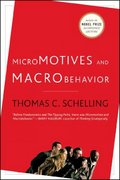Question
A) Tacky Textiles buys some inventory from Calvin Klein in 2021 for $529,000 on credit terms and will pay for the inventory in 2022. In
A)
Tacky Textiles buys some inventory from Calvin Klein in 2021 for $529,000 on credit terms and will pay for the inventory in 2022. In 2021 Tacky Textiles sells $431,000 of the inventory to The Bay for $592,000. The Bay will pay Tacky Textiles in 2023. (You do not need to show all financial statements.)
- Indicate the cash flows caused by the above transactions. (Be specific in terms of years too - show numbers for each of the three years and indicate whether the cash flow for the year is positive, negative, or zero.)
- Assume without these transactions, inventory accounts each year would be zero. Indicate the balances in inventory accounts caused by the above transactions. (Be specific in terms of each year too - show numbers for each of the three years even if zero.)
- Indicate the effects on profitability (ignore taxes) caused by the above transactions. Assume that without these transactions, profit each year would be zero. (Be specific in terms of years too - show numbers for each of the three years - even if zero.)
- Do the cash flow numbers give the same indication of performance for Tacky Textiles as the profitability numbers? Consider if you had to calculate the NPV with only the data given so far and some positive interest rate. Explain briefly.
B)
To start up a business you, as its founders, must invest as follows:
| Year | 0 | 1 | 2 | 3 | 4 | 5 |
| Investment | $5,000,000 | $0 | $2,500,000 | $2,500,000 | $2,500,000 | $2,500,000 |
Following the times when you are investing, the business is projected to make positive cash flows. Six years from now, the cash inflow is expected to be $3,500,000 and the cash flows are expected to grow at a rate of 3.5% per year (and continue in perpetuity).
- If the risk of the business implies an appropriate discount rate of 17% per year, what is the economic profit generated by this business venture (i.e., what is the NPV of starting this business)?
- What is the present value of the investment in the business (just the investing cash flows - the cash flows from year 0 to year 5)? Show how this can be calculated, in equation form with numbers included, where part of the equation is the PV of an annuity with n=4 cash flows of $2,500,000 each plus, separately, the $5,000,000 cash flow. You must show the full equation (use Word's equation editor) with numbers in it and with n=4 cash flows for the annuity equation portion. Use Word's equation editor in a professional manner with the appropriate numbers in it.
- Suppose the owners of the business doing a public offering of the business on the stock market at the end of year 5 (just after the last investment cash flow) and the market has the same expectations of future cash flows (as stated above for years 6 onward).
- What will be the market price of the business when it goes public (at year 5 just after the last investment cash flow)?
- What would be the present value of this amount (calculated in c.i) discounted back to year 0?
- What does this imply about the economic profit expected to be received by the people who buy the stock in the public offering?
- What does this imply about the economic profit expected to be received by the original founders of the business? In answering this, use the result from parts c.i, c.ii, and b. Include these numbers and show how you are using them when giving your answer. Compare this result to your answer in part a.
- What is the IRR of this business? Hint, you may want to set up the years 0 to 5 cash flows on a spreadsheet and then bring in the growing perpetuity formula to handle the cash flows from year 6 onward. Make sure all discounting calculations reference one rate cell. Do not hard-code the discount rate anywhere else in the spreadsheet. Then you can use Solver to determine the IRR by solving for NPV = 0 by changing the number in the rate cell. (Please use a clear high-resolution screen capture printout to show the results first with a rate of 12% (note, the rate should be formatted so that 6 digits appear after the decimal point: 12.000000%), then show the setup of Solver (with the solver box open) and then show result following running Solver (including 6 digits after the decimal point). What is the IRR (show 6 digits after the decimal place; e.g., 12.123456%)? (Make sure that after solving for IRR, the NPV is 0 to at least 12 decimal places.)
Step by Step Solution
There are 3 Steps involved in it
Step: 1

Get Instant Access to Expert-Tailored Solutions
See step-by-step solutions with expert insights and AI powered tools for academic success
Step: 2

Step: 3

Ace Your Homework with AI
Get the answers you need in no time with our AI-driven, step-by-step assistance
Get Started


